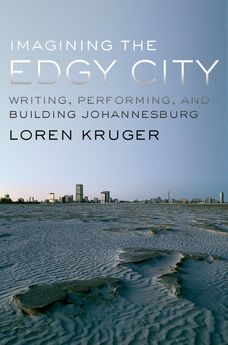"All roads lead to Johannesburg," declares the narrator of Alan Paton's epochal novel, Cry, the Beloved Country. Following roads that lead to performance, novels, film, architecture, and other cultural aspects, Imagining the Edgy City offers a compelling interdisciplinary study of South Africa's largest city. The city's edginess means not only persistent boundaries between the haves and the have-nots but also cosmopolitan diversity and invention.
Kruger begins with Johannesburg's fiftieth anniversary marked by the first Empire Exhibition outside Britain and by architecture and performance around 1936, and continues with narrative, performance and photographic responses to the rise of apartheid and decline of inter-racial culture around 1956; poetry and performance around the Soweto uprising of 1976, and fictional and social responses to crime and disorder around 1996. It concludes with the work of artists and planners collaborating in urban renewal projects around 2012.
A longside well-known figures-such as Nadine Gordimer, William Kentridge and David Goldblatt - the book introduces artists, architects, writers, and other chroniclers who remain largely unknown on the international stage. Ultimately Kruger provides a portrait of a modern city whose negotiation of the tensions between incivility and innovation invite truly global comparisons, not only with African cities such as Dakar, or other middle income cities of the "south" such as Bogota, Mexico, or Sao Paolo, but also with cities of the north like Chicago, New York, Paris, and Toronto.
Features
- Conferences: ACLA, ASTR (November 7-10, 2013 [Dallas]), MLA, AHA, Urban History Association (next meeting in 2014), SCMS, ASTR, African Studies Association (Nov 21-24, 2013 [Baltimore]), African Literature Association
Relevant Journals: PMLA, Comparative Literature, Comparative Literature Studies, Cinema Journal, World Literature Today, Theatre Survey, Modern Drama, Safundi, African Studies Review, Journal of Urban History, Urban History, African Journal of History and Culture,
- Journal of the African Literature Association (JALA)
- Selling point: Makes a compelling interdisciplinary argument for the centrality of performance and spatial practices in understanding the history of Johannesburg
- Selling point: Offers a history of cultural and intellectual life in Johannesburg that shows film, fiction, poetry, public art and architecture bring together the built with the imagined urban environment
Preface and Acknowledgements
Abbreviations and Glossary
Introduction
11936
21956
31976
41996
52012
References
Index
Suitable for students in literary and cultural studies, scholars of urban studies, everyone interested in South African literature and culture, scholars of the cities of the global South, and anyone invested in problems of urbanity in an age of globalization more generally.
